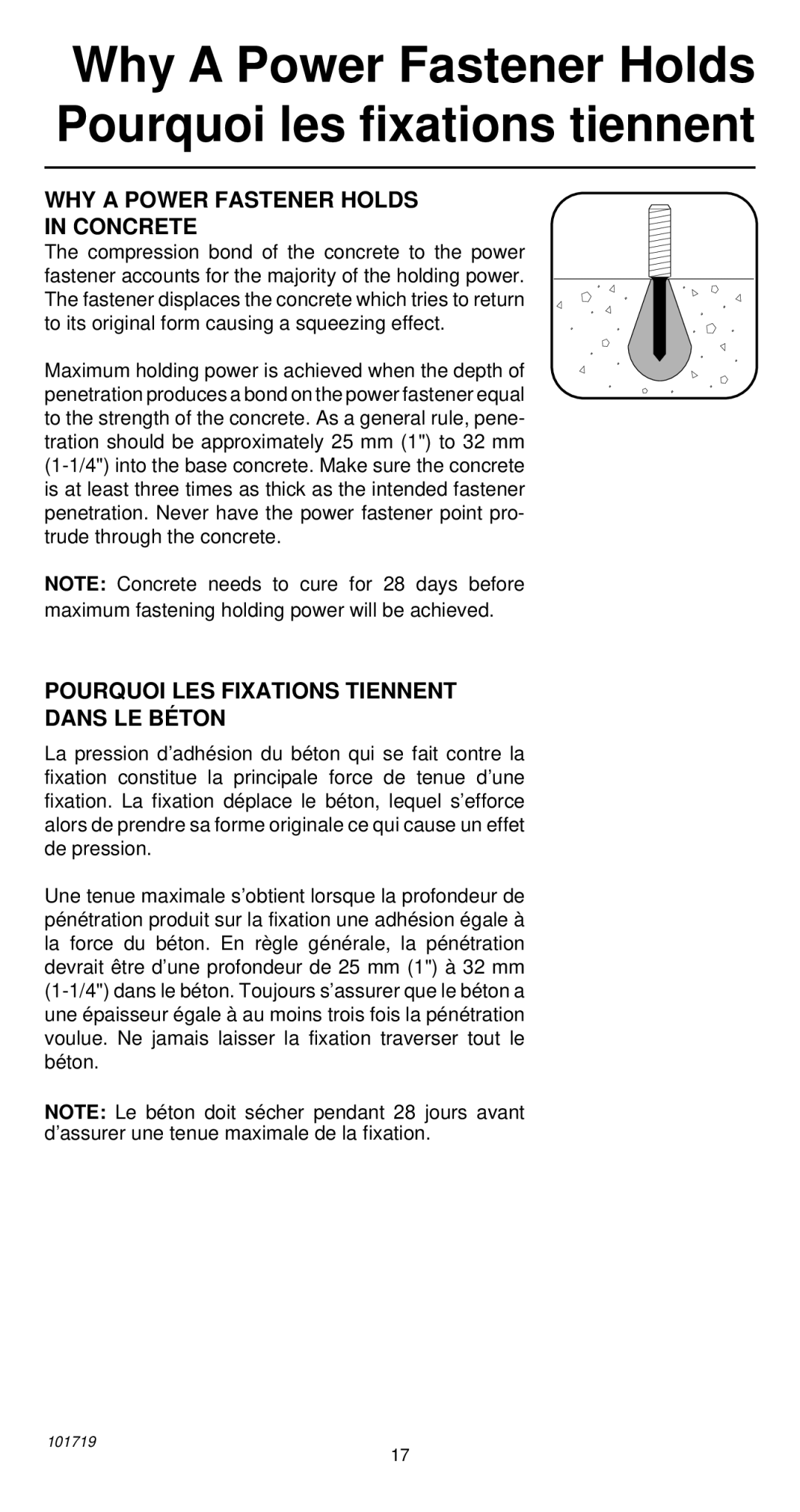
Why A Power Fastener Holds Pourquoi les fixations tiennent
WHY A POWER FASTENER HOLDS
IN CONCRETE
The compression bond of the concrete to the power fastener accounts for the majority of the holding power. The fastener displaces the concrete which tries to return to its original form causing a squeezing effect.
Maximum holding power is achieved when the depth of penetration produces a bond on the power fastener equal to the strength of the concrete. As a general rule, pene- tration should be approximately 25 mm (1") to 32 mm
NOTE: Concrete needs to cure for 28 days before maximum fastening holding power will be achieved.
POURQUOI LES FIXATIONS TIENNENT
DANS LE BÉ TON
La pression d’adhésion du béton qui se fait contre la fixation constitue la principale force de tenue d’une fixation. La fixation déplace le béton, lequel s’efforce alors de prendre sa forme originale ce qui cause un effet de pression.
Une tenue maximale s’obtient lorsque la profondeur de pénétration produit sur la fixation une adhésion égale à la force du béton. En règle générale, la pénétration devrait être d’une profondeur de 25 mm (1") à 32 mm
NOTE: Le béton doit sécher pendant 28 jours avant d’assurer une tenue maximale de la fixation.
101719
17
